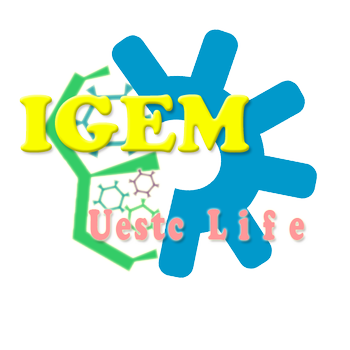Team:UESTC Life
From 2013.igem.org
(Difference between revisions)
(→Abstract:) |
|||
| Line 13: | Line 13: | ||
:Haloalkanes are widely used commercially. The majorty of these compounds have been shown to be serious pollutants as they are toxic and quite persistent in the environment, such as a man-made industrial chemical 1,2,3-Trichloropropane (TCP) and an organic pesticideγ-Hexachlorocyclohexane (Lindane,γ-HCH). These halogenated compounds have been introduced into our environment as a consequence of industrial waste disposal and widespread open use in agriculture, which need to be removed to low levels from waste streams and during sanitation of polluted sites. For this reason, the biodegradation of halogenated compounds is of great importance. In the project, several key enzymes in the biodegradation pathways of the two compounds were co-expressed in E. coli. As putting the different selected enzymes together, it will have a ability to degrade more halogenated compounds besides the both. To construct the efficient co-expression system and achieve biodegradation of γ-HCH and TCP, we adopt 2A peptide and polycistronic co-expression. Foot and mouth disease virus 2A peptide has been widely used for co-expression of multiple genes in eukaryote systems. However, the use of the 2A peptide in prokaryotes is limited, and so far only one paper described that F2A can work in E. coli as well. To explore whether the 2A peptides can work in our co-expression system, several vectors were constructed by using all three 2A peptides, respectively. | :Haloalkanes are widely used commercially. The majorty of these compounds have been shown to be serious pollutants as they are toxic and quite persistent in the environment, such as a man-made industrial chemical 1,2,3-Trichloropropane (TCP) and an organic pesticideγ-Hexachlorocyclohexane (Lindane,γ-HCH). These halogenated compounds have been introduced into our environment as a consequence of industrial waste disposal and widespread open use in agriculture, which need to be removed to low levels from waste streams and during sanitation of polluted sites. For this reason, the biodegradation of halogenated compounds is of great importance. In the project, several key enzymes in the biodegradation pathways of the two compounds were co-expressed in E. coli. As putting the different selected enzymes together, it will have a ability to degrade more halogenated compounds besides the both. To construct the efficient co-expression system and achieve biodegradation of γ-HCH and TCP, we adopt 2A peptide and polycistronic co-expression. Foot and mouth disease virus 2A peptide has been widely used for co-expression of multiple genes in eukaryote systems. However, the use of the 2A peptide in prokaryotes is limited, and so far only one paper described that F2A can work in E. coli as well. To explore whether the 2A peptides can work in our co-expression system, several vectors were constructed by using all three 2A peptides, respectively. | ||
|[[File:Uestc_life.png|200px|right]] | |[[File:Uestc_life.png|200px|right]] | ||
| - | |||
| - | |||
| - | |||
| - | |||
| - | |||
| - | |||
<!--- The Mission, Experiments ---> | <!--- The Mission, Experiments ---> | ||
Revision as of 11:58, 9 August 2013
Abstract:
|
|
 "
"
